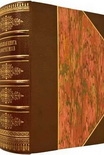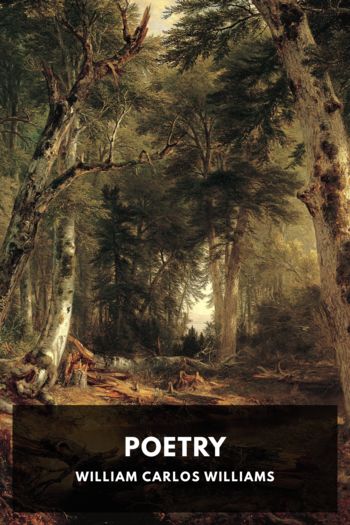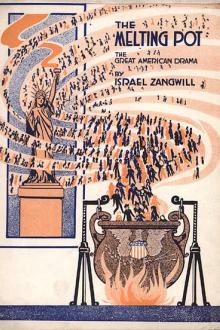No Modernism Without Lesbians, Diana Souhami [love books to read txt] 📗

- Author: Diana Souhami
Book online «No Modernism Without Lesbians, Diana Souhami [love books to read txt] 📗». Author Diana Souhami
No one was paid and the total cost to Bryher of making the film was $2,000. In location shots in the village of Lutry, crowds followed the crew. H.D. said of the finished film: ‘It is without question a work of art.’ She thought it posed existential questions and was dramatically thrilling:
When is an African not an African? When obviously he is an earth-god. When is a woman not a woman? When obviously she is sleet and hail and a stuffed sea-gull. When is white not white and when is black white and when is white black? You may or may not like this sort of cinematography.
Pabst declared himself ‘very enthusiastic’ about it. Eslanda said, ‘It’s a dreadful highbrow but beautifully done.’ In October 1930 it was screened at the Academy cinema in London; the previous year, the Robesons had been refused service at the Savoy Grill. Interest in it came from many countries, including Japan. Borderline called for the right to be other, be that lesbian, queer, black, white.
The encroaching Nazi presence haunted the film. Close Up and POOL Productions came to an end with Hitler’s rise to power.
Kenwin
Bryher’s next modernist project was the building in 1930 of a Bauhaus villa in the foothills above Lake Geneva at Burier-La-Tour near Montreux.
It was the time of the Bauhaus… I loved the new functional furniture, the horizontal windows and the abolition of what I thought of as messy decoration.
The aesthetic of the Bauhaus School, founded by Walter Gropius, was space, light and holistic living, a unity of life and art. Berlin was the birthplace of the Bauhaus movement. Kenneth Macpherson worked on the project with Bryher. They named the building Kenwin, a naff merging of syllables of his first name and hers. It was the only modern house in the area. Bryher’s father encouraged the investment.
Bryher intended Kenwin to be a place of work and creativity for all who lived there. The villa’s first architect was the Hungarian film set designer and architect Alexander Ferenczy, a pupil of Adolf Loos, whose minimalist views were reflected in the works of Le Corbusier, Mies van der Rohe and other modernists. Ferenczy had designed sets for the film producers Alexander Korda and Friedrich Zelnik. His design for Kenwin reflected his cinematographic interest and awareness of the uses of light. There was a film studio and a library on the ground floor, there were bedrooms above facing the mountains and lake, there were decks and balconies.
Bryher moved in in September 1931. She gave the full address as Villa Kenwin, Chemin de Vallon, 1814 Burier-La-Tour, Vaud, Switzerland. There was creative space for them all. She added to her menagerie: more monkeys (Sister, Bill and Gibb), two tiger cubs, dogs and cats. But her dream of the place as a centre of creativity was never realized. Kenwin became her home, not Kenneth’s or H.D.’s. They visited, but no more films were made. Close Up came to an end. Macpherson and H.D. took separate paths.
Villa Kenwin © Wikimedia Commons
no more normal
Macpherson kept easily to ‘No more Normal’. The writer Norman Douglas, who drank, became his permanent companion. They travelled to Tunisia and Capri, frequented the bars, picked up young men. Macpherson made no more films. H.D., after the abortion and Macpherson’s rebuttal, lost direction in her work and came close to breakdown.
Freud
In the summer of 1932, Bryher went to Berlin for the last of her sessions with Sachs. One afternoon they were threatened in the street by gangs of brown-shirted youths. Sachs told Bryher he was leaving for Boston. She had arranged funds, to be managed by Freud’s son Martin, to help analysts threatened by anti-Semitism and the collapse of the Viennese economy. She urged Sachs, before he left, to write to Freud in Vienna to ask him to take on H.D. as an analysand. Havelock Ellis also recommended H.D. to Freud at Bryher’s request.
So Freud wrote to Bryher about analysis for her ‘cousin’, the poet. He suggested a fee of $15 an hour for daily sessions for three months, the account to be settled at the end of each month.9 He wanted to read H.D.’s poetry so as to better understand her. He hoped she would not be living alone in Vienna, because the nature of his analysis precluded her from socializing with his family.
Bryher and Kenneth Macpherson saw H.D. off for Vienna in February 1933. She stayed at the Hotel Regina, built as a palace in 1877 at the Ringstrasse, and walked to Freud’s home at 19 Berggasse for her daily five o’clock sessions. These began on 1 March 1933, a month after Hitler became Chancellor in Germany. She hoped Freud would help her start writing again. She had lost direction and only by writing did she feel she could cope with her dread of mental breakdown and fear of the impending war.
H.D. was forty-six, Freud seventy-seven and frail after operations for throat cancer. Unmodernist in his tastes, he collected antiques and his practice room was filled, H.D. said, with the ‘stares’ of animal-shaped gods and idols. She thought it like an opium dive. She resisted lying on the couch, but ‘he said he would prefer me to recline’. All day, from breakfast until he went to sleep, he smoked. His usual quantity was twenty cigars a day – Trabucos, which were the tobacco monopoly of the Austrian government. Often on Sundays he went to art museums and archaeological collections.
For H.D., familial transference to Freud worked fast. She referred to him as Papa, as the oracle of Vienna, a mother-bull ‘filled with potent love’ and as ‘Jesus Christ after the resurrection’. On his birthday, his study was filled with flowers from friends. H.D. had wanted to buy him a statue of a goddess to go with his collection of antiques, but could not find anything suitable.
During their





Comments (0)